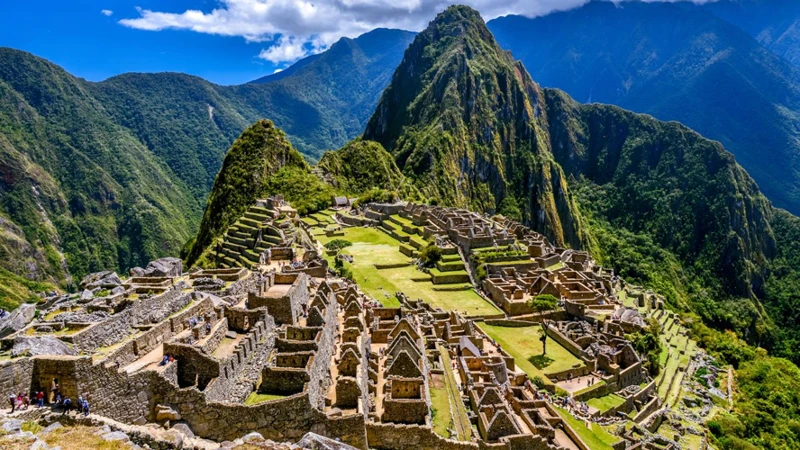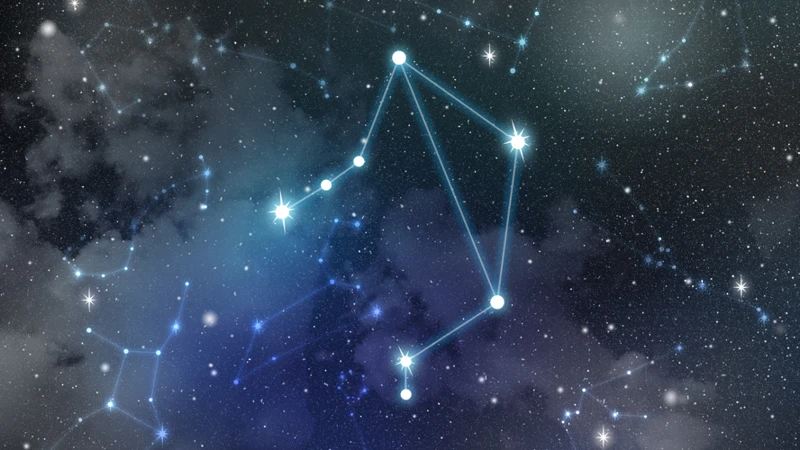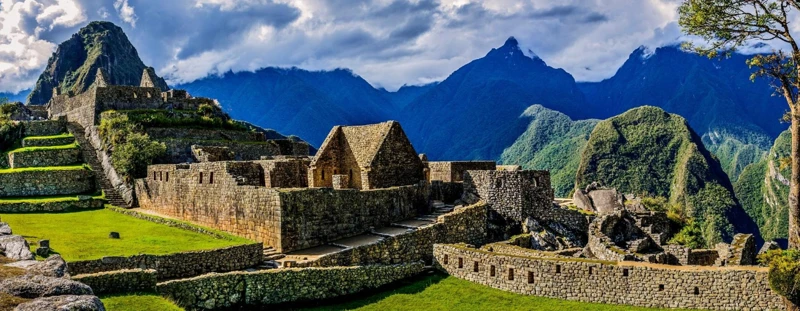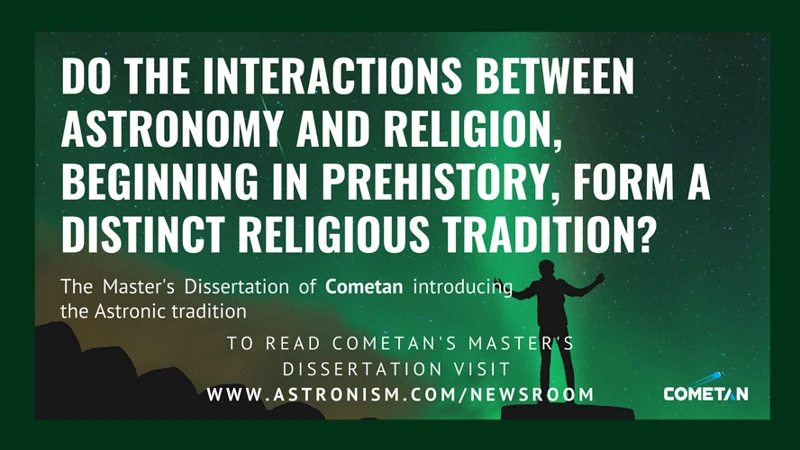Inca’s Advanced Knowledge of Astronomy: Unlocking the Celestial Enigma Embarking on a journey through the annals of history, one is astounded by the extraordinary wisdom and advancements of the ancient Inca civilization. Among their many remarkable achievements, the Inca’s profound understanding of astronomy stands as a testament to their intellectual prowess. In a world devoid of modern technology, they possessed an unparalleled knowledge of the celestial bodies and their intricate movements. From their use of astronomical structures and observatories to their ingenious calendar system and agricultural practices, the Inca’s mastery of astronomy permeated every aspect of their society. This article delves into the depths of their advanced knowledge, shedding light on the captivating connections between the Inca civilization and the cosmos.
Contents
- 1. The Inca Civilization and Astronomy
- 2. The Inca’s Understanding of Celestial Bodies
- 3. Inca Astronomy and Agriculture
- 4. Legacy and Impact of Inca Astronomy
- Conclusion
-
Frequently Asked Questions
- 1. What motivated the Inca civilization to study astronomy?
- 2. How did the Inca observe the movements of celestial bodies?
- 3. Did the Inca have a calendar?
- 4. How did the Inca use their knowledge of astronomy in agriculture?
- 5. What were some of the major astronomical structures built by the Inca?
- 6. Were the Inca aware of the solar system’s planets?
- 7. How did the Inca worship the Sun?
- 8. Are there any modern scientific acknowledgments of the Inca’s astronomical knowledge?
- 9. Is Inca astronomy still practiced in contemporary indigenous cultures?
- 10. What ongoing research is being conducted to further uncover Inca astronomy?
- References
-
Frequently Asked Questions
- 1. How did the Inca use astronomy in their daily lives?
- 2. What were the main astronomical structures built by the Inca?
- 3. How did the Inca calendar align with celestial events?
- 4. What was the significance of the Sun in Inca culture?
- 5. How did the Moon influence the Inca way of life?
- 6. What did the planets symbolize in Inca culture?
- 7. How did the Inca understand and predict seasons for crop cultivation?
- 8. How did the Inca use their astronomical knowledge for efficient water management?
- 9. Are there any modern acknowledgments of the Inca’s advanced knowledge of astronomy?
- 10. How is Inca astronomy still relevant in contemporary indigenous practices?
- References
- Read More
1. The Inca Civilization and Astronomy

The Inca civilization, nestled high in the Andes Mountains of South America, had a deep-rooted connection with the celestial realm. Astronomy held immense importance for the Inca, shaping their religious beliefs, agricultural practices, and social structure. Their appreciation for the cosmos extended beyond mere observation; they sought to understand the movements of the stars, sun, moon, and planets, and how these celestial bodies influenced various aspects of their lives. This understanding led to the creation of astronomical structures and observatories, such as Inti Watana, which served as both an astronomical tool and a sacred site. The Inca’s fascination with astronomy also manifested through their complex calendar system, encompassing solstices, equinoxes, and celestial alignments. From their meticulous alignment of structures with celestial events to their ability to predict seasons for agriculture, the Inca’s advanced knowledge of astronomy permeated every facet of their society, leaving a lasting legacy on the world.
1.1 The Importance of Astronomy for the Inca
The Inca civilization considered astronomy to be of utmost importance, as it played a multifaceted role in their society. The Inca believed that the celestial bodies held immense power and influence over their daily lives. Astronomy was intricately tied to their religious beliefs, as they worshiped various celestial deities and sought guidance from the stars. They believed that by studying and understanding the movements of the celestial bodies, they could gain insight into the will of the gods. Astronomy played a crucial role in timekeeping and navigation for the Inca. They relied on celestial markers, such as the position of the sun and stars, to determine the changing of seasons and to navigate across vast distances. This knowledge was invaluable for their agricultural practices, trade routes, and military campaigns. The Inca’s advanced understanding of astronomy allowed them to create a highly organized and efficient society that was deeply connected to the cosmos. They recognized the significance of celestial events in both the spiritual and practical aspects of their lives, cementing the importance of astronomy in their civilization’s foundation.
1.2 Astronomical Structures and Observatories
The Inca civilization showcased their profound understanding of astronomy through the construction of remarkable astronomical structures and observatories. These architectural marvels were meticulously designed to align with celestial events and served multiple purposes for the Inca people. One notable example is the Inti Watana, a sacred site and astronomical tool located in Machu Picchu. This stone structure, carved with precision, served as an instrument for tracking the movement of the sun. Additionally, it played a crucial role in Inca rituals and ceremonies, symbolizing the connection between the earthly and celestial realms. Another impressive astronomical structure is the Coricancha, a temple dedicated to the Sun God Inti. Its walls were adorned with gold and silver, reflecting the importance of the sun in Inca culture. The Coricancha was strategically positioned to align with solstices, equinoxes, and other celestial events, showcasing the Inca’s deep understanding of astronomy. These astronomical structures and observatories not only served as practical tools for tracking celestial movements, but also held immense spiritual and cultural significance for the Inca civilization. Their intricate designs and precise alignments with celestial events are a testament to the advanced knowledge and reverence for astronomy that the Inca possessed.
1.3 The Inca Calendar and Celestial Alignments
The Inca calendar was intricately tied to celestial alignments, reflecting the Inca’s deep understanding of the cosmos. The calendar served as a crucial tool for organizing their agricultural activities, religious ceremonies, and societal events. At the heart of the Inca calendar was the Inti Raymi, or Festival of the Sun, which marked the winter solstice and the sun’s return. This celestial alignment was of immense significance for the Inca, as it signaled the rebirth of the sun and the start of a new agricultural cycle. They believed that the alignment between the sun and specific structures during the Inti Raymi held spiritual and cosmic significance, strengthening their connection with the divine.
The Inca calendar was influenced by the changing positions of the moon and the stars. The Inca closely observed lunar phases and incorporated them into their calendar system. They believed that the moon influenced the growth of crops and the fertility of the land, thus playing a crucial role in their agricultural practices. The Inca calendar also incorporated celestial events such as eclipses and the movement of planets, acknowledging their impact on earthly affairs.
Celestial alignments were not solely limited to the sun and the moon. The Inca people recognized the significance of specific constellations in their calendar system, with constellations like the Pleiades playing a prominent role. The rising of the Pleiades in the night sky marked the beginning of the agricultural season, guiding the Inca in planting crops and managing their agricultural activities.
In addition to agricultural implications, celestial alignments held cultural and societal significance for the Inca as well. They believed that these alignments were a physical manifestation of their spiritual beliefs and connected them to their ancestral gods. The Incas’ ability to accurately track the movements of celestial bodies and align their calendar with these events showcased their advanced knowledge of astronomy and its interplay with their culture and way of life.
Today, modern astronomers and researchers continue to study the Inca calendar and its celestial alignments to gain insights into the Inca’s sophisticated astronomical knowledge. The combination of their precise observations and the spiritual importance placed on celestial events has left a lasting impact on our understanding of ancient civilizations and their relationship with the cosmos.
To read more about the fascinating world of ancient gods and goddesses, you can explore this article.
2. The Inca’s Understanding of Celestial Bodies

When it came to celestial bodies, the Inca possessed a remarkable understanding that surpassed their time. The Sun, known as Inti, held tremendous religious significance and was considered the ruler of all life on Earth. Its movements were carefully observed and celebrated through festivals and rituals. Similarly, the Moon played a crucial role in Inca life, guiding their agricultural practices and serving as a symbol of fertility. The Inca also had knowledge of the planets and assigned distinct meanings to each. For instance, Venus was associated with agriculture and fertility while Mars represented war and warfare. Their celestial comprehension extended far beyond mere mythology, intertwining with their daily lives and shaping their belief systems. The Inca’s nuanced understanding of these celestial bodies facilitated their harmonious coexistence with the cosmos and reinforced their connection with the spiritual realm.
2.1 The Sun and Its Religious Significance
The sun, known as Inti in the Inca culture, held profound religious significance for the civilization. Considered the ancestor of all Inca rulers, it was believed that the emperor was a direct descendent of the sun god. The sun was revered as a deity, and the Inca people worshipped it through various rituals and ceremonies. One such celebration was Inti Raymi, a grand festival that took place during the winter solstice, marking the return of the sun after the shortest day of the year. During this festival, elaborate processions, dances, and sacrifices were offered to honor and show gratitude to the sun god.
The Inca’s understanding of the sun’s movements allowed them to determine the changing seasons and plan agricultural activities accordingly. They recognized the sun’s vital role in sustaining life on Earth, as it provided warmth, light, and energy for crops to grow. The high-altitude geography of the Inca Empire made their agricultural practices heavily reliant on the sun. They carefully observed the sun’s position and its zenith passages to determine the ideal time for planting, harvesting, and performing various agricultural rituals. This intimate connection between the sun and agriculture showcased the Inca’s deep reverence for this celestial body.
The Inca’s knowledge of the sun’s annual path across the sky enabled them to construct impressive solar observatories, such as the famous Inti Watana in Machu Picchu. This stone structure served as an astronomical tool for measuring the sun’s movements and played a pivotal role in religious ceremonies. The Inca’s intricate understanding of the sun’s behavior, combined with their spiritual beliefs, shaped their religious practices and their connection to the celestial world.
The Inca civilization’s reverence for the sun, its understanding of its movements, and its integration into religious and agricultural practices highlight the incredible advancements in their knowledge of astronomy. The sun, as an essential celestial body, played a central role in shaping the Inca’s worldview and daily lives. Understanding the religious significance of the sun in Inca culture allows us to appreciate the depth of their astronomical knowledge and their profound connection to the cosmos.
[Read more about the role of constellations in navigation and timekeeping](/the-role-of-constellations-navigation-timekeeping/)
2.2 The Moon and Its Influence on Inca Life
The moon played a significant role in the lives of the Inca people, influencing various aspects of their daily life and belief system. The Inca recognized different phases of the moon and understood its connection to the agricultural calendar. They observed how the moon’s phases correlated with the growth of crops, allowing them to determine the optimal time for planting and harvesting. The Inca believed that the moon had a direct impact on human fertility and used its cycles to guide their decisions regarding childbirth and family planning. They also incorporated the moon into their religious practices, with rituals and ceremonies dedicated to honoring its power and influence. Inca mythology attributed divine attributes to the moon, considering it a deity and a source of spiritual guidance. The moon’s cycles and movements were meticulously studied by Inca astronomers, contributing to their overall understanding of celestial patterns and strengthening their connection to the cosmos. The Inca’s profound respect for the moon highlights their recognition of the interconnectedness between celestial bodies and human existence, shaping their way of life in harmony with the natural world.
2.3 The Planets and Their Meanings in Inca Culture
When it comes to understanding the Inca’s advanced knowledge of astronomy, we cannot overlook their interpretation of the planets and their meanings within their culture. The Inca civilization attributed great significance to the celestial bodies that graced the night sky. Here is a breakdown of the planets and their meanings in Inca culture:
1. Mama Quilla (Moon): The Moon, known as Mama Quilla, held a prominent role in Inca life. It was associated with femininity, fertility, and agriculture. The Inca believed that the Moon held power over the tides, influencing the growth of crops and the productivity of the land.
2. Inti (Sun): The Sun, known as Inti, was one of the most revered deities in Inca culture. It represented the divine ruler and symbolized vitality, energy, and abundance. The Inca held elaborate ceremonies and festivals dedicated to the worship of Inti, affirming its crucial role in their religious practices.
3. Venus: Venus, known as Chaska, was seen as the morning and evening star in Inca astronomy. It was associated with love, beauty, and prosperity. The Inca believed that the movements of Venus influenced the course of human relationships and could signify fortunate or challenging times.
4. Mars: Mars, known as Anti, was associated with war, courage, and strength. The Inca believed that the movements of Mars had a direct impact on military endeavors and conflicts. They closely observed its position and incorporated it into their strategic decision-making.
5. Jupiter: Jupiter, known as Wakon, was seen as a powerful force governing the journey of souls. It was associated with spirituality and the afterlife. The Inca believed that Jupiter’s position in the sky could indicate the fate of departed souls and the spiritual realm.
6. Saturn: Saturn, known as Illapa, represented agriculture, crops, and rain. The Inca closely monitored Saturn’s movements to predict weather patterns and determine the optimal time for planting and harvesting. Saturn’s alignment with other celestial bodies played a crucial role in the Inca’s agricultural practices.
The Inca’s understanding of the planets and their meanings demonstrated their deep reverence for the celestial realm and their belief in the interconnectedness of the cosmos with everyday life. By comprehending the significance of these celestial bodies, the Inca were able to align their activities with the rhythms of the heavens, ensuring prosperity, harmony, and spiritual well-being throughout their society. To learn more about the importance of celestial bodies in different cultures, you can explore the significance of nodes in the natal chart.
3. Inca Astronomy and Agriculture

Inca Astronomy and Agriculture: Harnessing the Celestial Wisdom for Bountiful Harvests The Inca civilization’s profound understanding of astronomy was not limited to a mere admiration of the celestial bodies; it had a direct impact on their agricultural practices. By comprehending the seasonal changes and celestial alignments, the Inca were able to effectively plan their crop cultivation and optimize their agricultural output. Through careful observation, they identified the solstices and equinoxes, positioning their agricultural terraces in alignment with these celestial events to harness the maximum amount of sunlight. Inca farmers also leveraged their knowledge of celestial bodies to efficiently manage water resources, constructing irrigation channels and reservoirs to ensure their crops received adequate hydration throughout the year. The Inca incorporated astronomical observations into their rituals and agricultural festivals, acknowledging the interconnectedness between the celestial realm and the success of their harvests. This harmonious fusion of astronomy and agriculture showcased the Inca’s remarkable ability to integrate their understanding of the cosmos into practical applications that sustained their society for generations to come.
3.1 Understanding Seasons and Crop Cultivation
Understanding the seasons and effectively cultivating crops was of paramount importance to the Inca civilization. They recognized that the movement of celestial bodies played a crucial role in determining the changing seasons and the optimal time for planting and harvesting. The Inca’s advanced knowledge of astronomy enabled them to accurately predict seasonal changes, allowing them to plan their agricultural activities accordingly.
To comprehend the seasonal patterns, the Inca closely observed the movements of the sun, moon, and stars. They identified celestial markers, such as the position of the sun during equinoxes and solstices, to determine the beginning of each season. They created agricultural calendars based on these astronomical events, detailing the ideal planting and harvesting times for different crops.
The Inca utilized their understanding of celestial bodies to devise sustainable farming techniques. They constructed terraces on the mountainsides, which allowed for efficient water management and irrigation. By observing the alignment of celestial bodies, they determined the optimal timing for water distribution, preventing water scarcity and ensuring the successful growth of crops.
The Inca’s profound comprehension of astronomy not only facilitated their ability to adapt to changing seasons but also enhanced their agricultural productivity. Their knowledge of celestial movements enabled them to cultivate a diverse range of crops in different regions, taking advantage of microclimates and ensuring a steady food supply throughout the year.
To the Inca, cosmic harmony and agricultural prosperity were deeply interwoven. By aligning their farming practices with celestial phenomena, they maximized their chances of bountiful harvests and sustained their civilization in the challenging mountainous environment.
This holistic approach to agriculture, incorporating astronomy and closely observing nature’s rhythms, showcases the Inca’s ingenuity and their ability to harness the power of the cosmos for practical purposes. Their advanced understanding of seasons and crop cultivation remains an inspiration for sustainable farming practices today.
Internal link:
Importance of Nodes in Natal Chart
3.2 Efficient Water Management through Astronomy
One fascinating aspect of the Inca civilization’s advanced knowledge of astronomy was its application in efficient water management. The Inca people recognized the vital role that water played in their agricultural practices, and they ingeniously utilized astronomical observations to effectively manage this valuable resource. They understood that the movement of celestial bodies, particularly the position of the sun, directly influenced the amount of rainfall and the timing of seasonal changes. By carefully observing the sun’s position throughout the year, the Inca could anticipate the onset of the rainy season and the best time to start planting crops. They used their knowledge of celestial alignments to create sophisticated irrigation systems that channeled water to their agricultural terraces and fields. Through the strategic construction of canals, reservoirs, and aqueducts, they were able to optimize water distribution and minimize wastage. This integrated approach to water management, blending astronomy with engineering prowess, enabled the Inca to thrive in their high-altitude environment and sustain their agricultural productivity.
3.3 Inca Rituals and Agricultural Festivals
The Inca Rituals and Agricultural Festivals were integral parts of Inca society, deeply intertwined with their understanding of astronomy. These rituals and festivals were meticulously planned and executed, aligning with celestial phenomena and agricultural cycles. The Inca believed that the cosmos played a vital role in the success of their crops and overall prosperity. Their astronomical knowledge guided the timing of these rituals and festivals, ensuring an auspicious connection with the celestial forces.
One of the most significant agricultural festivals celebrated by the Inca was Inti Raymi, the Festival of the Sun. It took place during the winter solstice, when the sun was at its farthest point from the Earth. This festival was a grand spectacle, held at the sacred site of Sacsayhuaman and attended by thousands of people. The Inca would offer sacrifices, perform sacred rituals, and make offerings to the sun god, Inti. This celebration symbolized the renewal of life and the agricultural cycle, with the sun’s return brought forth the promise of a fruitful harvest.
Another essential festival was the Capacocha ceremony, a ritualistic celebration conducted every few years. It involved the selection of young children from different regions of the empire, who were considered pure and untouched by sin. These children were adorned with lavish clothing and taken to high mountaintops as offerings to the gods. The selection of locations and timing for this ceremony were influenced by astronomical observations, ensuring the maximum alignment with celestial events.
Through their rituals and festivals, the Inca sought to maintain a harmonious relationship with the celestial world, acknowledging the impact it had on their agricultural abundance. These cultural practices not only reinforced their religious beliefs but also acted as a social bonding experience, bringing communities together to celebrate and express gratitude for the bountiful gifts bestowed upon them by the cosmos.
The Inca’s intricate integration of astronomy into their rituals and agricultural festivals is a testament to their advanced understanding of celestial bodies and their influence on their daily lives. These ceremonies served as an opportunity to honor the cosmic forces that governed their existence, ensuring the well-being and prosperity of their civilization.
4. Legacy and Impact of Inca Astronomy

The legacy of Inca astronomy reverberates through time, continuing to impact our understanding of the cosmos today. Modern astronomy acknowledges the vast knowledge and achievements of the Inca civilization, recognizing their deep understanding of celestial bodies and their movements. Their astronomical observations and calculations have provided valuable insights to contemporary astronomers, shedding light on the mysteries of the universe. Inca astronomy remains a vital part of contemporary indigenous practices, with many indigenous communities preserving and continuing the traditions and rituals passed down by their Inca ancestors. Ongoing research continues to unravel the depths of Inca astronomy, uncovering new discoveries and challenging previous assumptions. The influence of Inca astronomy extends far beyond the realms of science, leaving an indelible mark on history, culture, and our collective understanding of the cosmos.
4.1 Modern Astronomy’s Acknowledgment of Inca Knowledge
Modern astronomy has come to acknowledge and appreciate the remarkable knowledge and understanding of the Inca civilization when it comes to celestial matters. The Inca’s advanced understanding of astronomy has been recognized as a testament to their intellectual prowess and ingenuity. Researchers and astronomers around the world now acknowledge the Inca’s mastery of celestial observations and calculations. Their ability to accurately predict celestial events, such as solstices and equinoxes, demonstrates the depth of their astronomical knowledge. Their precise alignment of structures with celestial bodies, such as the sun and stars, has been acknowledged as a testament to their advanced understanding of the cosmos. The Inca’s expertise in astronomy has also contributed to our modern understanding of celestial mechanics and the functioning of the celestial bodies. By studying the Inca’s astronomical practices, modern astronomers have gained insights into celestial navigation, timekeeping, and the role of constellations in understanding the cosmos. The Inca’s knowledge continues to inspire and inform ongoing research in the field of astronomy, further solidifying their legacy as pioneers in celestial studies.
4.2 Inca Astronomy in Contemporary Indigenous Practices
Inca astronomy continues to have a profound impact on contemporary indigenous practices, preserving a rich cultural heritage that has withstood the test of time. Indigenous communities in the Andes, such as the Quechua and Aymara peoples, maintain a deep reverence for celestial bodies and their significance in spiritual and agricultural traditions. The knowledge passed down through generations includes the understanding of celestial events and their correlation to festivals, rituals, and agricultural cycles. These communities still rely on the observation of stars, moon phases, and constellations to guide their activities and ceremonies. For instance, the annual Inti Raymi festival in Cusco, Peru, celebrates the winter solstice and pays homage to the sun god Inti, showcasing the continued importance of Inca astronomy in contemporary rituals. Additionally, contemporary indigenous practices incorporate the concept of “ayni,” a reciprocal relationship between humans and nature that incorporates the wisdom of celestial bodies. The enduring presence of Inca astronomy in modern indigenous practices serves as a powerful reminder of the cultural resilience and reverence for the cosmos.
4.3 The Ongoing Research and Uncovering of Inca Astronomy
The study of Inca astronomy continues to captivate scholars and researchers as they delve deeper into the mysteries and intricacies of this ancient civilization’s celestial knowledge. Ongoing research has shed light on various aspects of Inca astronomy, enriching our understanding of their astronomical practices.
One area of exploration focuses on the significance of specific astronomical structures and their alignment with celestial events. Researchers have conducted meticulous surveys and astronomical calculations to identify additional celestial alignments in Inca sites. By studying the placement of structures in relation to the movements of the sun, moon, and stars, experts have uncovered further evidence of the Inca’s advanced understanding of celestial phenomena.
Continued archaeological excavations have unearthed artifacts and inscriptions that provide valuable insights into Inca astronomy. These discoveries offer glimpses into the symbolism and ritualistic practices associated with celestial observations. By analyzing these artifacts, researchers are piecing together the intricate connections between Inca astronomy, religion, and daily life.
Advancements in technology have also played a crucial role in uncovering new information about Inca astronomy. Satellite imagery and remote sensing techniques have allowed researchers to study the landscape and identify potential astronomical features that may have been overlooked previously. This technological progress has opened up new avenues for investigation and has expanded our understanding of the scope and precision of Inca astronomical knowledge.
As the exploration of Inca astronomy continues, the collaboration between archaeologists, astronomers, anthropologists, and indigenous communities remains vital. By combining traditional knowledge with modern scientific methodologies, researchers strive to gain a comprehensive understanding of the Inca’s profound celestial wisdom.
Conclusion

The Inca civilization’s advanced knowledge of astronomy leaves an indelible imprint on our understanding of the celestial realm. Their remarkable achievements in astronomy continue to captivate scholars and enthusiasts alike. As we conclude this exploration of the Inca’s expertise in astronomy, several key points emerge:
- Modern Astronomy’s Acknowledgment of Inca Knowledge: The Inca’s understanding of celestial bodies and their movements has garnered recognition and admiration in the field of modern astronomy. Researchers have acknowledged the Inca’s remarkable ability to align structures with astronomical phenomena and accurately predict celestial events.
- Inca Astronomy in Contemporary Indigenous Practices: The legacy of Inca astronomy lives on in the traditions and practices of contemporary indigenous communities in the Andean region. These communities continue to honor and incorporate astronomical knowledge into their rituals, ceremonies, and agricultural practices.
- The Ongoing Research and Uncovering of Inca Astronomy: The study of Inca astronomy is an ever-evolving field, with ongoing research and expedition efforts dedicated to uncovering deeper insights into the Inca’s astronomical knowledge. Archaeological excavations, scientific investigations, and digital mapping techniques contribute to our expanding understanding of the Inca’s celestial pursuits.
As we reflect upon the Inca civilization’s advanced knowledge of astronomy, we can appreciate the profound impact it had on their society and the enduring influence it continues to wield. Their deep connection with the cosmos serves as a testament to the human capacity for observation, exploration, and intellectual curiosity. The Inca’s advanced understanding of astronomy stands not only as a testament to their ingenuity but also as a reminder of the profound and everlasting bond between humanity and the stars above.
Frequently Asked Questions

1. What motivated the Inca civilization to study astronomy?
The Inca civilization believed that by studying astronomy, they could connect with the divine and understand the will of their gods. Astronomy played a vital role in their religious rituals and ceremonies.
2. How did the Inca observe the movements of celestial bodies?
The Inca carefully observed the sky with the naked eye, noting the positions of the stars, sun, moon, and planets. They also built observatories and astronomical structures, which aided in their celestial observations.
3. Did the Inca have a calendar?
Yes, the Inca had a highly sophisticated calendar known as the “Inti Raymi.” It helped them track the solstices, equinoxes, and agricultural seasons, enabling efficient crop cultivation.
4. How did the Inca use their knowledge of astronomy in agriculture?
The Inca used astronomical observations to determine the optimal time for planting and harvesting crops. They understood the correlation between celestial events and seasonal changes, thereby maximizing agricultural productivity.
5. What were some of the major astronomical structures built by the Inca?
The Inca constructed remarkable astronomical structures such as Machu Picchu, Inti Watana, and Coricancha. These structures were designed to align with specific celestial events and served as religious sites as well.
6. Were the Inca aware of the solar system’s planets?
Yes, the Inca were aware of several planets like Venus, Mars, and Jupiter. They assigned symbolic meanings and associated them with deities in their belief system.
7. How did the Inca worship the Sun?
The Inca considered the Sun, Inti, as their most important deity. They held grand ceremonies and festivals in honor of the Sun, expressing their gratitude and seeking blessings for their agricultural endeavors.
8. Are there any modern scientific acknowledgments of the Inca’s astronomical knowledge?
Yes, modern astronomers have acknowledged the precision and advanced understanding of the Inca’s astronomical knowledge. Their ability to predict celestial events and align structures with astronomical phenomena is highly respected.
9. Is Inca astronomy still practiced in contemporary indigenous cultures?
Yes, the knowledge of Inca astronomy continues to be passed down through generations in contemporary indigenous cultures of South America. It serves as a connection to their ancestral traditions and spiritual beliefs.
10. What ongoing research is being conducted to further uncover Inca astronomy?
Researchers continue to explore and analyze Inca astronomical artifacts, structures, and ancient texts to gain a deeper understanding of the Inca’s astronomical practices. This ongoing research aims to shed more light on their sophisticated cosmological knowledge.
References
- Inca Astronomy: How the Incas Saw the Stars
- Inca Civilization and Astronomy
- Astronomy of the Inca Empire
Frequently Asked Questions

1. How did the Inca use astronomy in their daily lives?
The Inca used astronomy to plan their agricultural activities, navigate the vast mountains, and determine the best time for religious ceremonies and festivals.
2. What were the main astronomical structures built by the Inca?
The Inca constructed impressive observatories such as the Coricancha Temple and the Intihuatana Stone, which were used to observe celestial events and alignments.
3. How did the Inca calendar align with celestial events?
The Inca calendar was closely tied to celestial movements such as solstices and equinoxes, which helped them determine the agricultural seasons and important religious dates.
4. What was the significance of the Sun in Inca culture?
The Sun, known as Inti, held immense religious and spiritual significance in Inca culture. It was considered the supreme deity and the source of all life on Earth.
5. How did the Moon influence the Inca way of life?
The Inca closely observed the phases of the Moon to determine planting and harvesting times, as well as to plan religious ceremonies and festivities.
6. What did the planets symbolize in Inca culture?
The Inca attributed different meanings and qualities to each planet. For example, Venus was associated with femininity and fertility, while Mars represented courage and warfare.
7. How did the Inca understand and predict seasons for crop cultivation?
The Inca studied the movement of the Sun, stars, and constellations to determine the changing seasons, allowing them to plan their agricultural activities accordingly.
8. How did the Inca use their astronomical knowledge for efficient water management?
The Inca used astronomical observations to predict rainfall patterns and manage their water resources effectively, creating an advanced irrigation system that increased agricultural productivity.
9. Are there any modern acknowledgments of the Inca’s advanced knowledge of astronomy?
Modern astronomy recognizes the Inca’s impressive understanding of celestial movements, and their observations continue to contribute to our understanding of the cosmos.
10. How is Inca astronomy still relevant in contemporary indigenous practices?
Inca astronomy remains a crucial part of contemporary indigenous rituals and ceremonies, connecting present-day communities with their rich cultural heritage and ancestral wisdom.
References
- Astronomy of the Inca Empire
- Inca astronomy: Horizon, light, and shadow – Gullberg – 2019
- INCA ARCHAEOASTRONOMY







